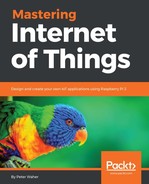Consumers that want to discover things register with the same thing registry. Depending on the type of registry used, consumers can find their corresponding things in different ways. There are two principal types of methods available, for the propagation of information about things registered with the registry: event-based methods and search-based methods.
Event-based methods are typically based on the Publish/Subscribe communication pattern. Things register their existence by publishing information about themselves on a topic. Consumers of devices subscribe to relevant topics and get informed about the existence of devices through events on the corresponding topics. The topic tree becomes tightly coupled with the types of devices registering with the registry. To interconnect things using an event-based approach, publishers and subscribers typically need to be connected simultaneously, or consumers need to be able to traverse the history of each topic to find the corresponding things among all those available for the respective topic. Publishers also need to repeatedly publish their existence during their lifetime.
Search-based methods, on the other hand, allow consumers to search more freely on the metadata things registered in the registry. It is requirement-based instead of event-based. Consumers search when they need to find entities, not when things register and become available. Search-based methods are more scalable and allow for finding things using a multi-dimensional set of tags, rather a restricted topic tree. They are also more loosely coupled to the types of devices available. Things only need to register and unregister and update their registration when their information changes. This method, however, does not include a way to inform consumers of changes in registrations, or when new devices are registered.
